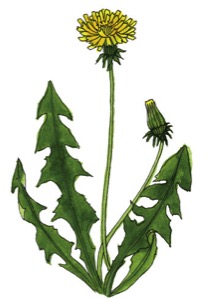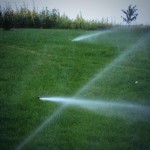(By Jared Hoyle, KSU Turfgrass Research and Extension)
This time of year we can be caught of guard when it comes to maintaining our lawn. Today we have some reminders about maintaining cool-season turfgrass for all you weekend warriors out there!
- Reminder – Avoid frequent watering to reduce weeds germination and disease.
- May is time for fertilizing cool-season turfgrass that is going to be irrigated. (See information below from Ward Upham.)
- Mowing Tip – Only remove 1/3 of the leaf blade at a time and make sure you mow your lawn at the recommended mowing height. For more information on mowing your lawn – https://www.bookstore.ksre.ksu.edu/pubs/MF1155.pdf
- Mowing Tip #2 – Retuning your clippings to the lawn can return up to 25% of fertilizer nutrients that would be lost if clippings were to be removed. – https://www.bookstore.ksre.ksu.edu/pubs/MF2110.pdf
Fertilize Irrigated Cool-season Lawns in May By Ward Upham
May is an excellent time to fertilize cool-season lawns such as
tall fescue and Kentucky bluegrass if they will be irrigated throughout
the summer. Non-irrigated lawns often go through a period of summer
dormancy because of drought and do not need this fertilization.
May is a good time to fertilize because the springtime flush of
growth characteristic of these grasses has tapered off, so the
fertilizer you apply will be less likely to cause excessive shoot growth
than if you fertilized at a full rate in April. Slow-release nitrogen
sources are ideal. These nitrogen sources promote controlled growth,
which is desirable as the stressful summer weather approaches.
Relatively few fertilizers available to the homeowner supply ALL of the
nitrogen in the slowly available form. But one such product that is
widely available is Milorganite. Other such products available in the
retail market include cottonseed meal, alfalfa-based fertilizers, and
any other products derived from plants or animals. (Bloodmeal is an
exception, and contrary to popular belief, the nitrogen it supplies is
quickly available.) These products are all examples of natural organic
fertilizers. They typically contain less than 10 percent nitrogen by
weight, so compared to most synthetic fertilizers, more product must be
applied to get the same amount of nitrogen. Translation: they are more
expensive! Apply enough to give the lawn one pound of nitrogen per 1,000
square feet. For example, if the fertilizer is 6 percent nitrogen by
weight, you will need to apply almost 17 pounds of fertilizer product
per 1,000 square feet. Summer lawn fertilizers that contain at least a
portion of the nitrogen as slow-release are fine to use as well. Be sure
to follow label directions. If cost is prohibitive, you can use the less
expensive quick-release (i.e., soluble) sources, but split the
application into two doses as follows: apply enough to give the lawn 0.5
lb nitrogen per 1,000 square feet in May and again in early June.
***** Reminder – These are recommendations for cool-season turfgrass species!*****
For more information on tall fescue lawns – https://www.bookstore.ksre.ksu.edu/Item.aspx?catId=545&pubId=1460
For more information on Kentucky bluegrass lawns – https://www.bookstore.ksre.ksu.edu/Item.aspx?catId=545&pubId=816












